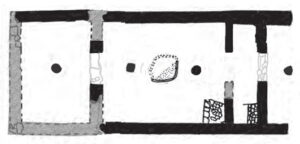Also part of the path of discovery of where our cultures came from and the foundation we still need to learn from:
The apparent Bronze Age roles of Hestia and Hermes
In terms of the ancient Greek history of our split consciousness marked by the emergence of modern science, between family order and societal order, I’m suggesting the one could come to the rescue of the other. The foundations of close-knit family and group life are still strong and seem to be, in turn, the foundations of all human societies too. So they’d be a healthy source of unified environmental rules that might communicate with societal institutions, and teach them how to see, by feeling their effects on their environments, reviving their instincts of wellness and survival. In Greek terms, it would be home life created in the early Aegean hearth home, the “Oikos” coming to the rescue of the “Polus.”
__________________________________________
An opening came from distinguished Lehman College home science professor Pat Thompson. She found a way to reconstruct revisionist histories from what they disparage and what they are replacing, exposing the enduring Aegean Bronze Age culture,
One of the great turning points was the dawn of Greek science, with Thales, the first modern scientist, an Ionian trader who showed how to use math to make a fortune, set the new model. The idea of nature controlled by abstract rules of concepts and rules of control flourished and floundered again and again ever after.
At the same time, the new science culture proudly banished the earlier 2500 yr Aegean science of hearth and home, that our own family lives as centers with connection come from, associated with Hestia and Hermes, the first and only humble Greek gods.

The research leading to this came from Pat Thompson’s discovery of how to reconstruct revisionist histories and retracing the highly distinctive archeology of the Bronze Age Aegean hearth-home’s need for columns, leading to Greek architecture!
As a postscript — the problem with the great “centers with connections” of modern societies, commerce, and business is their losing touch with their contexts due to modeling decisions not on the common good like families do, but on abstract principles for ever-growing control of their contexts, human and natural. With the centers of power hoarding the profits of the societies being built, distributing enough to keep the peace but with no interest in distributing enough to care for our societies or the natural world all depended on, our ways of life were blinded to what became the “mysterious externalities” of global destruction directly caused by seeking limitless power! Who would have known? How did that get so confused?
________________________________________
More on the research is in my old notes on the Hestia connection called Hestia’s New World.

3 thoughts on “Bronze Age roles of Hestia and Hermes”